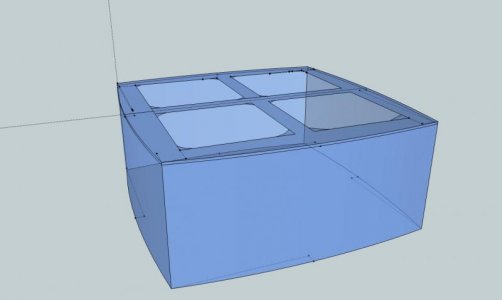I originally built the tank per spec for an LFS here in town and bowed like crazy and started to crack out in one of the corners so we added a coupla crossbraces to it and it lasted several years until the shop shut down a few years ago. All in all, the tank lasted probably 10 years or so. The tank was 72 x 24 x 12", 3/4" vertical walls and 1/2" bottom.
As for deflection tolerances, you're wise to keep them down. The more a tank bows, the easier it is to scratch, and since scratches are the biggest complaint with acrylic - best to keep the deflection to a minimum. I shoot for 1/8" total deflection but can live with 3/16". And when you build tanks to a tight deflection tolerance, strength is inherent so we don't have to worry about that *as* much

James

